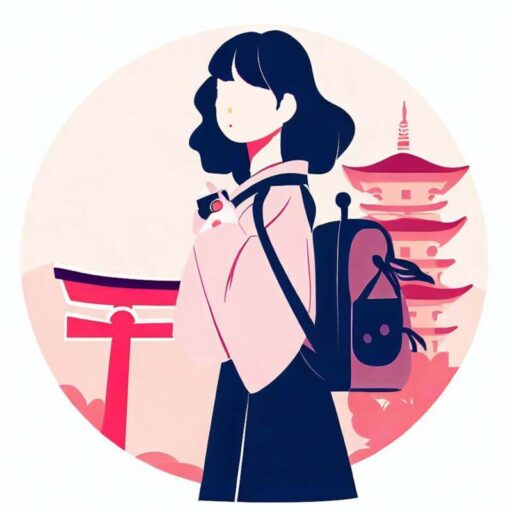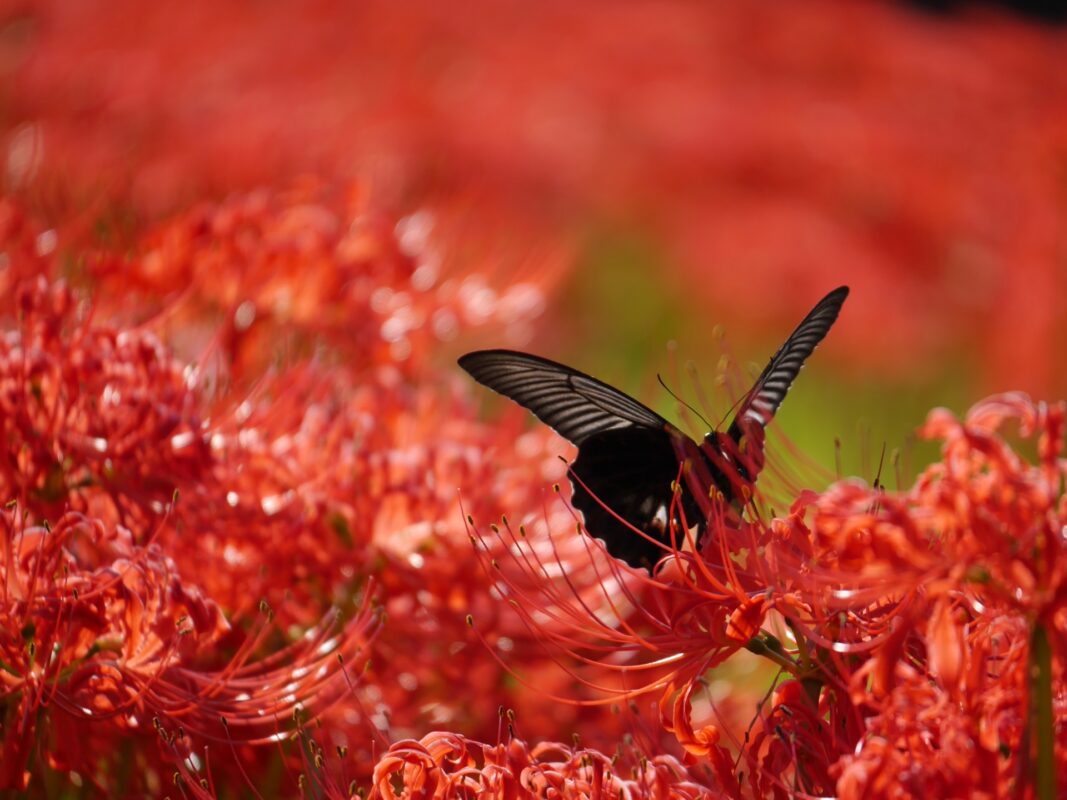A thorough analysis of the charm of the equinox! From history to modern ways of spending time

『 This article is… 』
This page provides a detailed explanation of Japan’s Higan, its history, origin, characteristics of each region, and its role in modern society. Travel web writer Kasumi shares the charms of the equinox that she felt while traveling all over Japan, allowing you to deepen your understanding of traditional culture. It is full of useful information for those who are interested in culture and history, and those who want to know the significance of the Equinox. By reading, you can deepen your understanding of traditional Japanese events and develop a sense of respect for local culture.
Hello, I’m Kasumi, a travel web writer. Having traveled all over Japan and all 47 prefectures, this time I would like to focus on the traditional Japanese event “Higan”.
When you hear the word Higan'', you may have some familiarity with it, but there are surprisingly few people who know the detailed history and origin, the characteristics of each region, and how to spend time in the present day. Through this article, I would like to delve deeper into the charm ofHigan”.
While traveling through Japan myself, I was able to sense the differences in the “Higan” of each region, which gave me the opportunity to reaffirm the richness of Japanese culture. Now, let’s immerse ourselves in the world of “Higan” together.
I hope this article will help you deepen your understanding of “Higan”.
- History and origin of Ohigan
- Characteristics of the equinox by region
- How to spend your time on the equinox in modern times
- Economic aspects of the equinox
- The value of Higan as a culture and expectations for the future
- Summary and thoughts
- Kasumi point
History and origin of Ohigan
What exactly does Ohigan mean and what kind of history has it passed through to the present day? In this section, we will delve into the history and origin of Ohigan.
History of the Equinox
Higan was originally a Buddhist event and was introduced to Japan from China during the Asuka period. Higan means crossing from Shigan,'' the world of suffering and confusion, toHigan,” the world of enlightenment and peace.
It is customary for Ohigan to be held for seven days, centered on the vernal and autumnal equinoxes, and three days before and after the equinoxes. During this period, the length of night and day are approximately the same, and the natural world is said to be at its most stable. For this reason, by honoring our ancestors and remembering those who have passed away, this time of year is considered an opportunity to reaffirm family ties and reflect on ourselves.
Origin of Ohigan
The word Higan'' in Ohigan is made up of the pairHigan” and Konogi'', withHigan” representing the world of enlightenment and Konogishi'' representing the world of confusion. During the Equinox period, people aim to cross fromthis shore” to “the other shore” through Buddhist training, and pray for the happiness and health of their families by offering memorial services to the spirits of their ancestors.
There is also a custom of visiting graves on the equinox, which is called “Higanmairi.” By visiting graves, you can feel a connection with your ancestors and reaffirm the preciousness of life and family ties.
The current state of the equinox
In modern Japan, Higan is not only a religious event, but also an important time for families to gather together. By taking a break from our busy lives, cherishing contact with family, and taking time to remember those who have passed away, we can find peace of mind.
I myself value visiting graves with my family every year on the equinox. Depending on the region, there are events and foods unique to the equinox, and many people are looking forward to them.
Characteristics of the equinox by region
Japan is a very long country from north to south, and the climate and culture vary greatly depending on the region. This is also reflected in the way people spend their time on the equinox, with each region having its own unique characteristics. Here we would like to introduce some of them.
Equinox of Hokkaido and Tohoku region
In the cold regions of Hokkaido and Tohoku, there may still be snow even during the equinox season. Even under such circumstances, people do not miss visiting graves. Particularly famous is that it sometimes coincides with Aomori Prefecture’s Nebuta Festival, allowing locals to enjoy the equinox and the Nebuta Festival together.
Equinox in the Kanto region
In the Kanto region, many temples hold Bonbori Festivals during the equinox. You can light up the lanterns and enjoy the equinox in a fantastic atmosphere. A typical place is Ueno Park in Tokyo, which is crowded with many tourists.
Equinox of the Chubu region
In the Chubu region, there is a custom of eating Ohagi when speaking of Ohigan. Ohagi is a Japanese sweet made with glutinous rice, and is especially popular in Aichi and Gifu prefectures. They are often handmade by families, and during the equinox season, you can enjoy the taste of home cooking.
The equinox of the Kinki region
In the Kinki region, seeing Higanbana'' is a traditional feature of Higan. Particularly in Nara and Kyoto prefectures, spider lilies are in full bloom at many temples and parks, and you can enjoy the beautiful scenery. Red spider lily is also calledmanjushaka” and is known as a flower that remembers the dead.
Equinox of Kyushu and Okinawa region
In the Kyushu region, a Higan market'' is sometimes held during the equinox. This is a market held during the Equinox period, where various foods and products are sold. In Okinawa Prefecture, the equinox is calledSeemie,” and rituals are held to honor the ancestors. During Siemi, families come together to comfort the spirits of their ancestors by cleaning graveyards and cooking food.
What did you think. I learned that the way the Equinox is spent differs greatly depending on the region, and that each region has its own customs and customs. The equinox can be said to be a wonderful time to experience the diversity of Japanese culture.
How to spend your time on the equinox in modern times
Higan has been a popular traditional event in Japan since ancient times, but as the times change, the way it is celebrated has also changed. How is the equinox spent in modern times? In this section, I would like to focus on that point.
The significance and changes of visiting graves
The custom of visiting graves on the equinox continues to this day, but as urbanization progresses, more and more people live away from their parents’ homes, and not everyone visits graves. However, many people still visit graves during the equinox period, feeling a connection with those who have passed away, and it is a time to cherish the bonds with family.
Modern equinox cuisine
Speaking of Ohigan, traditional foods such as ohagi and botamochi come to mind, but these foods have also evolved in recent years. Convenience stores and supermarkets sell a variety of ohagi and botamochi, making it easy for busy modern people to enjoy the atmosphere of the equinox.
Additionally, as people become more health-conscious, low-calorie and nutritious Higan cuisine has also appeared. For example, there are ohagi that uses sweeteners instead of sugar, and equinox dishes that use plenty of vegetables.
Diversification of ways to spend the equinox
In modern times, the ways to spend the equinox have diversified. While people value spending time with their families, an increasing number of people also choose to spend quiet time alone. Some people also choose to travel during the equinox period.
While traveling throughout Japan, I have spent time in various regions during the equinox period. I was able to feel the atmosphere of the Equinox in each region, and was able to reaffirm the richness of Japanese culture.
Higan has been cherished as a part of Japanese culture since ancient times, but even in modern times its meaning and ways of spending time have changed and become more diverse. By visiting graves and enjoying equinox cuisine, you can reaffirm your bonds with your family and feel connected to those who have passed away.
Economic aspects of the equinox
Higan is a traditional Japanese event that has strong religious and cultural aspects, but it also has a great impact on the economy. In this section, we would like to explore the impact of the Equinox on Japan’s economy and the businesses related to the Equinox.
Business related to visiting graves
Many people visit graves on the equinox. There are various businesses related to this, such as cleaning graves and selling offerings. Recently, grave cleaning services have also appeared, allowing families who live far away to keep their graves clean during the equinox period.
Flowers and food used as offerings are also popular. In particular, ohagi and botamochi are staples of Ohigan, and at this time of year, many products are on display at supermarkets and Japanese sweets shops.
Impact on tourism
During the Equinox period, many people not only visit graves but also enjoy sightseeing. Many tourists especially visit the spots where red spider lilies bloom. As a result, local accommodations, restaurants, and souvenir shops are thriving, contributing to the local economy.
I myself was able to visit various regions during the equinox season and enjoy the customs and food unique to each region. This is a very valuable experience for me as a travel web writer, and I am working hard to convey its charm to my readers.
Economic effects of the equinox
It can be said that the economic effects brought about by the Equinox are extremely large. This has had an impact not only on grave visiting-related businesses and tourism, but also on increased use of public transportation.
However, in modern times, the ways to spend the equinox have diversified, and the economic effects may have changed accordingly. Still, there is no doubt that the Equinox is valued as part of Japanese culture and contributes to the economy.
Higan has been passed down as a traditional event in Japan, but at the same time it has a great impact on the economy. The importance of the Equinox can be seen from the fact that business and tourism related to visiting graves have been revitalized and are contributing to the local economy.
The value of Higan as a culture and expectations for the future
Ohigan is a traditional event that has continued since ancient times in Japan, and while it has a religious and cultural background, it has not lost its value even in modern society. In this section, we will consider the value of Ohigan as a culture and our expectations for the future.
The cultural value of the equinox
Higan is rooted in Buddhist teachings and strongly reflects the Japanese virtues of respecting ancestors and valuing family ties. Through this event, Japanese people can feel a connection with those who have passed away and gain the strength to live.
In addition, events such as visiting graves and making offerings during the equinox serve as opportunities for communication with families and local communities, and play a role in deepening bonds between people.
I myself have traveled all over Japan and experienced the Equinox in various regions, and each time I have been able to feel the unique culture and traditions of each region, and have been able to experience the diversity and rich culture of Japan. is completed.
expectations for the future
While preserving its traditional aspects, Ohigan also has the flexibility to change with the times. In modern society, the ways to spend Higan have diversified, and this event is enjoyed in a way that suits each person’s lifestyle.
From now on, it is hoped that the Higan will not only be passed down as a part of traditional Japanese culture, but will also respond to the needs of modern society and communicate its value in new ways.
Also, the impact of the equinox on the economy cannot be ignored. The revitalization of businesses and tourism related to the equinox contributes to the local economy and helps support the economic growth of Japan as a whole.
Higan is an important cultural event that has continued since ancient times in Japan, and it has not lost its value even in modern society. The Equinox, which maintains its cultural value and contributes to the economy, will continue to support the Japanese people and play an important role in transmitting Japanese culture to the world.
Summary and thoughts
The deep significance and cultural value of Ohigan
Ohigan is not just an event to visit a grave; it has deep religious and cultural significance behind it. Based on Buddhist teachings, people cherish this event as an opportunity to honor their ancestors and cherish family ties. Additionally, each region has its own unique way of spending time and traditions, allowing you to experience the rich culture of Japan.
Equinox in modern society
Even in modern society, the significance of Higan has not faded and has been passed down in various forms. As lifestyles change, the way we spend time on the equinox is also changing, so this tradition will continue to be passed down.
Equinox and economy
The Equinox also has a major impact on the economy. Businesses and tourism related to visiting graves have been revitalized, contributing to the local economy. This means that the equinox has not only cultural value but also economic value.
Thoughts as an individual
I, Kasumi, have traveled all over Japan and experienced the Equinox in various regions. It was a very fulfilling experience for me as a web writer to be able to widely convey the charm of the equinox that I felt in each region. Through the equinox, I was able to experience Japan’s beautiful climate and the warmth of its people, and I was able to grow as well.
knot
Higan is an important cultural event that has continued since ancient times in Japan, and it has not lost its value even in modern society. I hope that the equinox will continue to be passed down as part of Japanese culture, and that its charm will be disseminated in even more diverse forms. I myself will continue to travel throughout Japan and continue to convey the charms of the equinox. In order to pass on Japan’s beautiful culture to the next generation, it is important for each of us to understand and cherish the significance of Higan.
Kasumi point
Kyoto Prefecture: Equinox where you can feel the traditions of the ancient capital
Kasumi point
Kyoto is known as the ancient capital and is dotted with many temples and historical buildings. During the equinox season, special memorial services are held at temples throughout the city, and many people come to visit graves and pray. Particularly famous is the Higan ceremony held at Chion-in Temple in Kyoto. This event is very formal and can be said to be a way to spend the equinox that is unique to Kyoto, which values tradition and formality.
Okayama Prefecture: Higan and peach blossoms
Kasumi point
Okayama Prefecture is known for being able to enjoy the equinox and peach blossoms at the same time. During the equinox season, peach blossoms are in full bloom around Kibitsu Shrine in Okayama Prefecture, attracting visitors. A unique feature of Okayama is that you can enjoy peach blossoms after visiting a grave or praying.
Nagasaki Prefecture: Nagasaki Lantern Festival and Equinox
Kasumi point
Nagasaki is famous for the Nagasaki Lantern Festival, which is held in conjunction with the Chinese New Year. This period also coincides with the equinox, so you can spend the equinox in a unique atmosphere in Nagasaki. Visiting graves in a cityscape decorated with lanterns is an experience unique to Nagasaki.
Tokyo: Equinox in the city
Kasumi point
In Tokyo, the tradition of Higan is cherished even in the midst of the hustle and bustle of the city. Many temples and cemeteries hold special memorial services and events during the Equinox period. A unique feature of Tokyo is that you can spend time away from everyday life by quietly visiting graves in the city.
Okinawa Prefecture: Okinawa’s equinox “Sea Me”
Kasumi point
In Okinawa, the equinox is called “Sea Me” and has its own unique tradition. During Seamie, Okinawans spend time with their families and relatives at the cemetery to console the spirits of their ancestors. Along with Okinawa’s unique cemetery culture, Seamy is characterized by valuing time to deepen family bonds. The unique customs of this region show how to spend the equinox in Okinawa, which is different from other regions in Japan.
By learning about the characteristics of the equinox in each region, you will be able to appreciate once again the depth of Japan’s rich culture and tradition. It was a very valuable experience for me to travel to these regions and experience their uniqueness.








